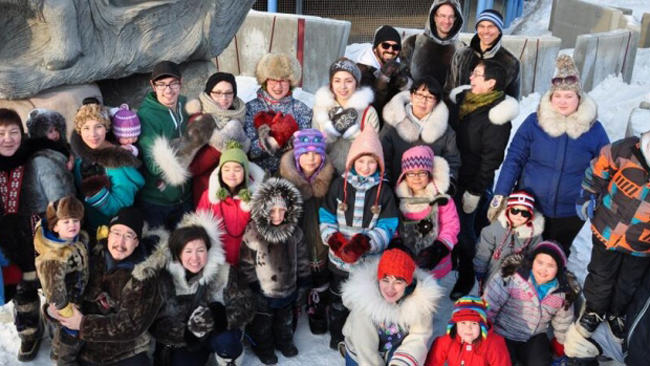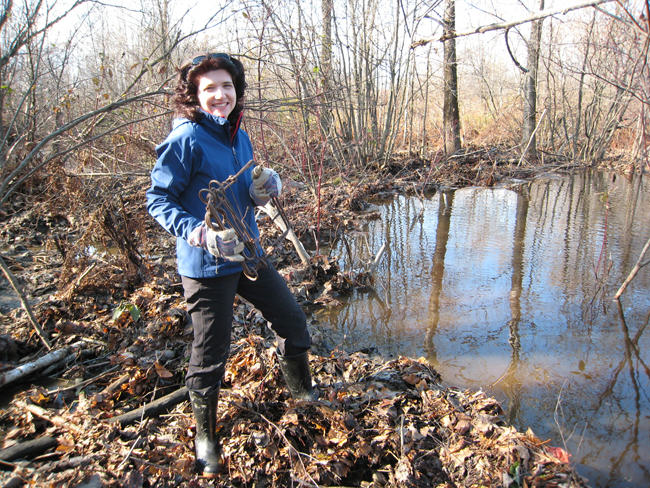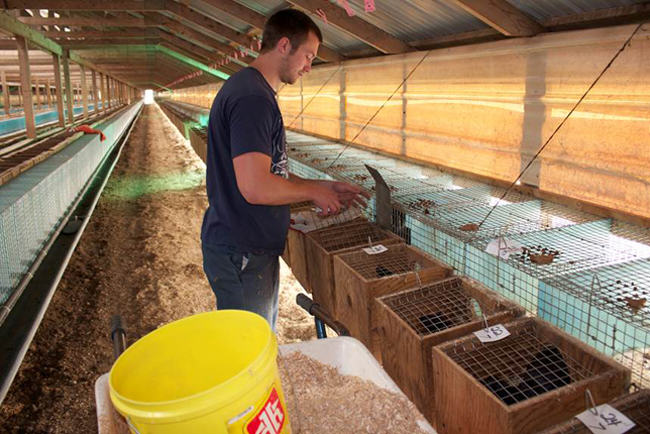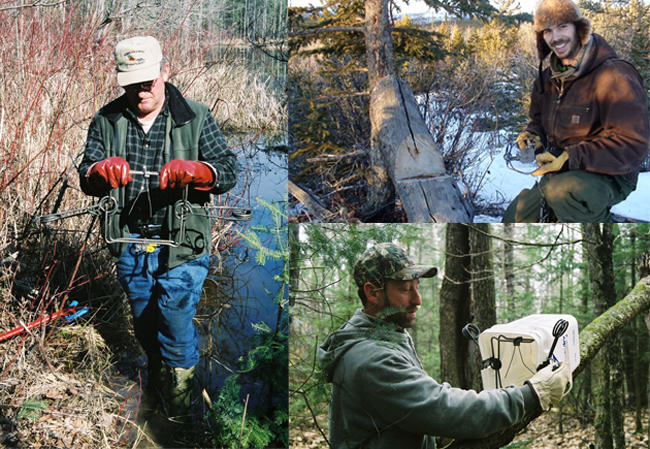
We are the people of the fur trade and we will be silent no longer! That is the new rallying cry of our proud and historic trade, and it’s long overdue.
It is hard to believe that the debate about fur has been raging for a full half-century – and a bit troubling to realize that I witnessed it all!
And while it is great to see all the fur on fashion runways and in the streets this winter, we still have a way to go to repair the damage caused by 50 years of activist lies, to reassure consumers that fur is produced responsibly and ethically.
Spotlight on Sealing
It was in March 1964, that a film on Radio-Canada, the French-language network of Canada’s public broadcaster, rocketed the northwest Atlantic seal hunt into the media spotlight for the first time. No matter that the shocking scenes of a live seal being poked by a sealer’s knife (“skinned alive”) would later prove to have been staged for the camera. (1)
In the 50 years that followed, the modus operandi of a lucrative new protest industry was refined: shocking images of questionable origin, celebrities to attract media attention, and emotional fund-raising campaigns that generated piles of money to drive more campaigns.
Markets for sealskins were weakened (with a US import ban in 1972 and a partial European ban in 1983), but the newly formed International Fund for Animal Welfare (IFAW) was soon pulling in $6 million annually – more than 3,000 Canadian sealers made risking their lives on the ice floes each Spring. Greenpeace and other groups jumped onto the gravy train, with help from Brigitte Bardot. (2)
In the 1980s – with wild furs more popular than they had been since the Roaring Twenties – the protesters turned their newly-honed media, fund-raising and political skills against trapping (3), a campaign that resulted in the European Union banning jaw-type “leg-hold” traps, in 1997. No matter that traps used in Europe were untested or that other methods used there to control wildlife (e.g., poisoning muskrats in Belgium and the Netherlands) had far-reaching animal-welfare and environmental consequences. Canadian diplomats were told: “Don’t worry about your scientific studies, don’t you understand that this is about politics?”
While campaigns against sealing and trapping continue, the anti-fur focus has now shifted to calls for a ban on fur farming – but the tactics are the same.

Absent: Voice of the Fur Trade
Throughout this debate, one voice was conspicuously absent: the voice of the people whose livelihoods and reputations were being attacked. There are several reasons for this, including the imperatives of modern media, where confrontation is “news” and “celebrities” are irresistible. Hunters, trappers and farmers, moreover, do not live in cities where most journalists are based, so they are rarely heard.
The structure of the fur trade itself – small-scale, decentralized and artisanal – also made it difficult for the industry to muster an effective response. And it didn’t help that those closest to the media and consumers – retail furriers – have little knowledge of production issues. Asking a furrier about trapping standards makes about as much sense as asking a seafood chef to explain fisheries management policy.
All this is about to change. After 50 years of turning the other cheek, the fur trade is finally speaking out more effectively. Under the banner “Truth About Fur”, fur farmers, trappers, biologists and veterinarians are setting the record straight.

Animal Activists Scrambling
The reaction of animal activists is revealing. Used to having the soapbox to themselves, they are scrambling to block or discredit the industry’s voice. I have experienced this personally.
When we refute lies or misinformation on-line, it doesn’t take long before a cyber-bully tries to shut down discussion. Rather than risk having their dogmatic beliefs shaken by facts, they shoot the messenger. Typical attacks include: “He’s paid to write this, don’t listen to him!” “He’s a fur industry troll!” Recently I was called “a sock puppet”.
SEE ALSO: MINK LIBERATION : 5 FACTS THE ALF DOESN’T WANT YOU TO KNOW
I suppose it is better to be a sock puppet than a marionette, which would mean that someone was pulling my strings. But the bad news for these cyber-bullies is that we are not puppets. We are the people of the fur trade, and we will be silent no longer.
If the vicious lies and slanders leveled by activists against the fur trade for the past 50 years were directed at any other group in society, they would be denounced as hate crimes. It’s time that animal activists were exposed for what they are: intolerant bullies with little understanding of modern environmental thinking.
Aboriginal (or other) trappers do not need lessons about respecting nature from urban activists. Mink farmers do not need lessons about caring for animals from People for the Ethical Treatment of Animals (PeTA). The fur trade is not a crime against nature; it is a prime example of “the responsible and sustainable use of renewable natural resources”, a principle supported by the International Union for Conservation of Nature (IUCN) and every other environmental authority. These are some of the facts that are documented by Truth About Fur.
It is encouraging that close to 500 international designers now include fur in their collections, compared with only about 40 in the early 1990s. And it is wonderful to see people of all ages with coyote and fox trim on their parkas this winter. But it is especially satisfying to know that, whatever people choose to wear, the fur trade’s story is finally being told by the people who live it.

* * *
1) Alan Herscovici, Second Nature: The Animal-Rights Controversy (Canadian Broadcasting Corporation, 1985; Stoddart Publishing, 1991), p. 74.
2) Herscovici, p. 70.
3) Herscovici, pp. 117-162.











Nice to see the truth about trapping being told, wwe just need more people to stand up to that antis.
petakillsanimals.com humanewatch.org
The entire marine mammal protection act was based on fraud. 1964: Private film company Artek Films vilifies Canadian sealers with footage, screened by CBC television, of a seal being skinned alive. Following a public outcry and investigation, the man in the film, Gus Poirier of Prince Edward Island, signs an affidavit declaring that he was “employed by a group of photographers … to skin a large seal for the film. I solemnly swear before witnesses that I was asked to torment the said seal and not to use a [club], but just to use a knife to carry out this operation, where in normal practice a [club] is used to first kill the seals before skinning them.” A Federal Standing Committee castigated CBC “for not enquiring into its accuracy before screening,” but the damage had been done.
Despite the ruling, the footage would later be used in IFAW propaganda, even though its founder, Brian Davies, stated under oath that he had never actually seen a seal being skinned alive.
Campaign tactics of this kind were largely responsible for the introduction in 1972 of the US Marine Mammal Protection Act, which stands to this day. Among the impacts of this draconian and scientifically unjustifiable law was the end to imports of marine mammal products from Canada to the US, and the subsequent devastation of local economies across maritime Canada.
EACH seal consumes between a ton and a ton and a half of fish yearly. Soon they will be facing a mass starvation if the herds aren’t culled. https://www.furcommission.com/saving-society-from-animal-snuff-films/
I for one would like to see Ms. DeGeneres’s appearance in the Arctic along with Ms Bardot, perhaps then they would come to the realization that denying the people who do the least damage to the Earth is 1)Hypocritical, 2) Cruel to other humans, 3) their smugness would smack them in their faces! and they would probably wear a fur gladly! I know quite a bit about how trapping is regulated and stupidities like they trap new borns is repeated often, the fact is birthing season trapping is not only illegal but the summer seasons fur is worthless to a trapper.Denying Canaadas’ natives a fair and equitable market for their pelts after the meat has been eaten is also cruel to the humans who live in and protect the forests. Will they wisen up when beaver move back to the areas they originally inhabited and knew as home? Perhaps in true concern for these animals the human will destroy his home and end urban sprawl which is a killer of wild fauna. (FAT CHANCE ). Now that they realize their wrongs they turn to fur farming as enemy number one. Here they ask what size the mink cage is, well there is not a size that will make them satisfied, NO what they want is to destroy a lifetime of hard work by tresspassing and releasing the ranched mink to the elements of starvation and predation while feeling good about themselves! Well enough about being patient, here are some facts you all should know! Mink are bred to be marketed to the highest bidder at auction and only the finest breeders survive because raising a mink means a high cost for these reasons. The mink are fed a nutritous diet and never know hunger, The mink are inocculated and never know disease, the mink are taken by veterinarian suggested methods and that after the rancher has given them life and welfare and caring! The truth is anti fur organizations have spread huge lies like stomped on trampled clubbed and the winner of all lies is..,,.,.,the mink are skinned alive! wow wow and to think otherwise intelligent humans believe this bullspew and send them $$$$$$$$$$ tax free when almost ZERO $$ are spent aiding animals anywhere! is the money kept in off shore accounts? It certainly is not going to your local SPCA or ASPCA, Where is it? I know the leaders live the life of Riley while small independant family run crafts people are accused of being the cruel ones! What a shame, what a stain on caring for the environment when we know that once pristine lakes and rivers are now mercury and acid laden, when we know that our seas are polluted with plastics that are strangling aquatic life, Need I go on?
PETA was convicted of paying people to skin animals alive so they could film it and say it was ‘fur industry cruelty’. THIS is where the cruelty comes from. https://topcatsroar.wordpress.com/2013/10/19/animal-welfare-v-animal-rights-skinned-alive-is-a-myth/